17 min to read
The ability to adapt and innovate should be part of the DNA of every company. Whether you're steering a startup or leading an established company, understanding how to evolve your operations can spell the difference between languishing in obscurity and ascending to new heights of success. This blog explores straightforward yet powerful strategies designed to transform your business. From leveraging the latest technology to nurturing a culture of continuous improvement, these tips will help you streamline your processes, enhance productivity, and, ultimately, drive growth.
Cloud Transformations
It looks like old news now, but adopting cloud technology is not merely an option but a critical step in maintaining a competitive edge. Cloud transformations grant businesses unparalleled flexibility, scalability, and efficiency. Whether it's a Cloud Contact Centre transformation or a Data Analytics transformation, the cloud offers an array of solutions that can optimize your operations. By enabling remote access, facilitating collaboration, and minimizing infrastructure costs, cloud transformations allow businesses to streamline their processes and stay relevant in today's dynamic market.
According to the latest available data, approximately 60% of corporate data is stored in the cloud.
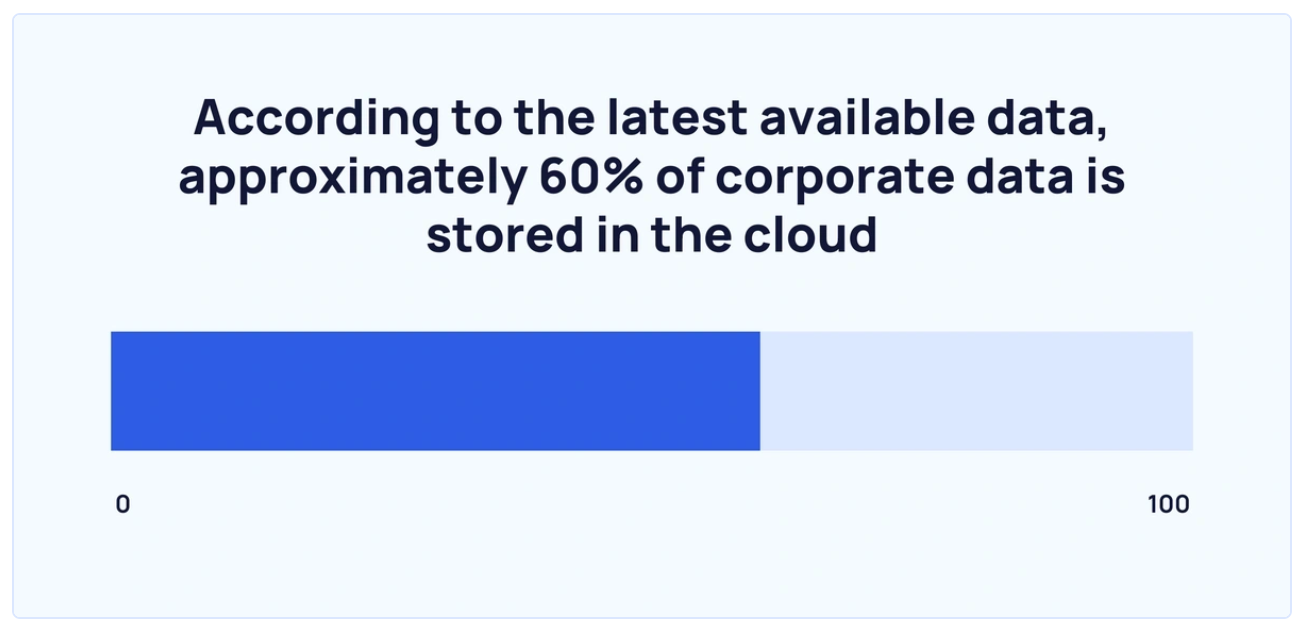
Here’s how the percentage of corporate data stored in the cloud has changed in recent years:
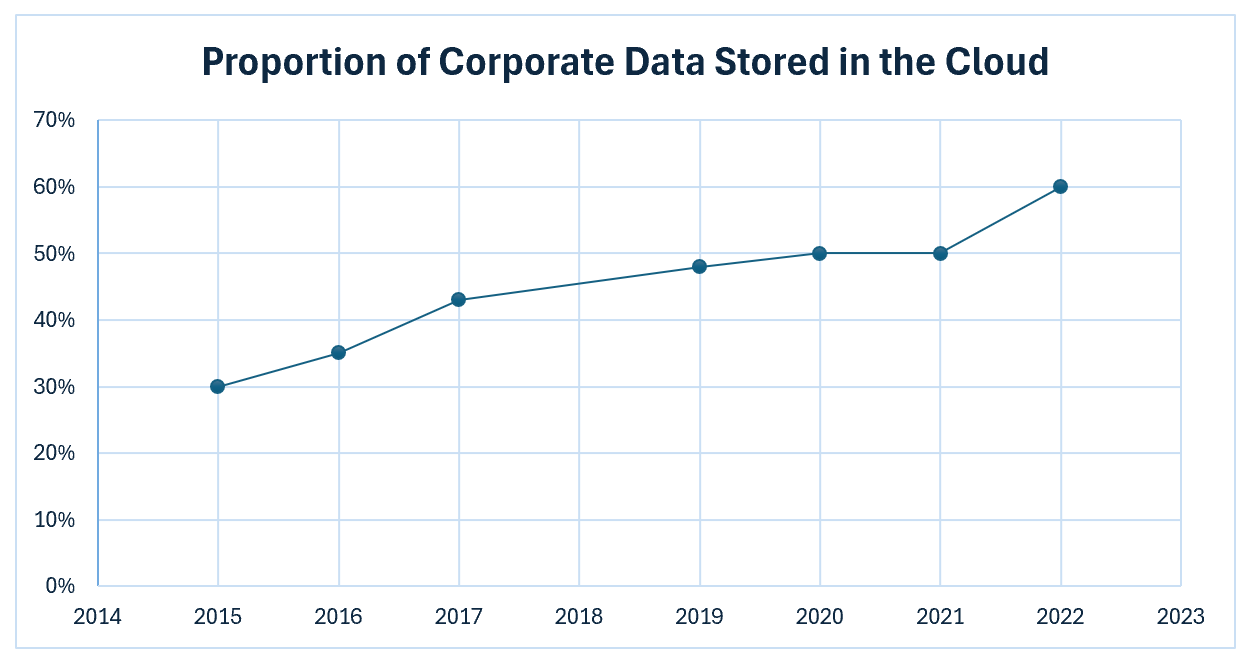
Here are the latest figures we got on for sensitive data stored in the public cloud:
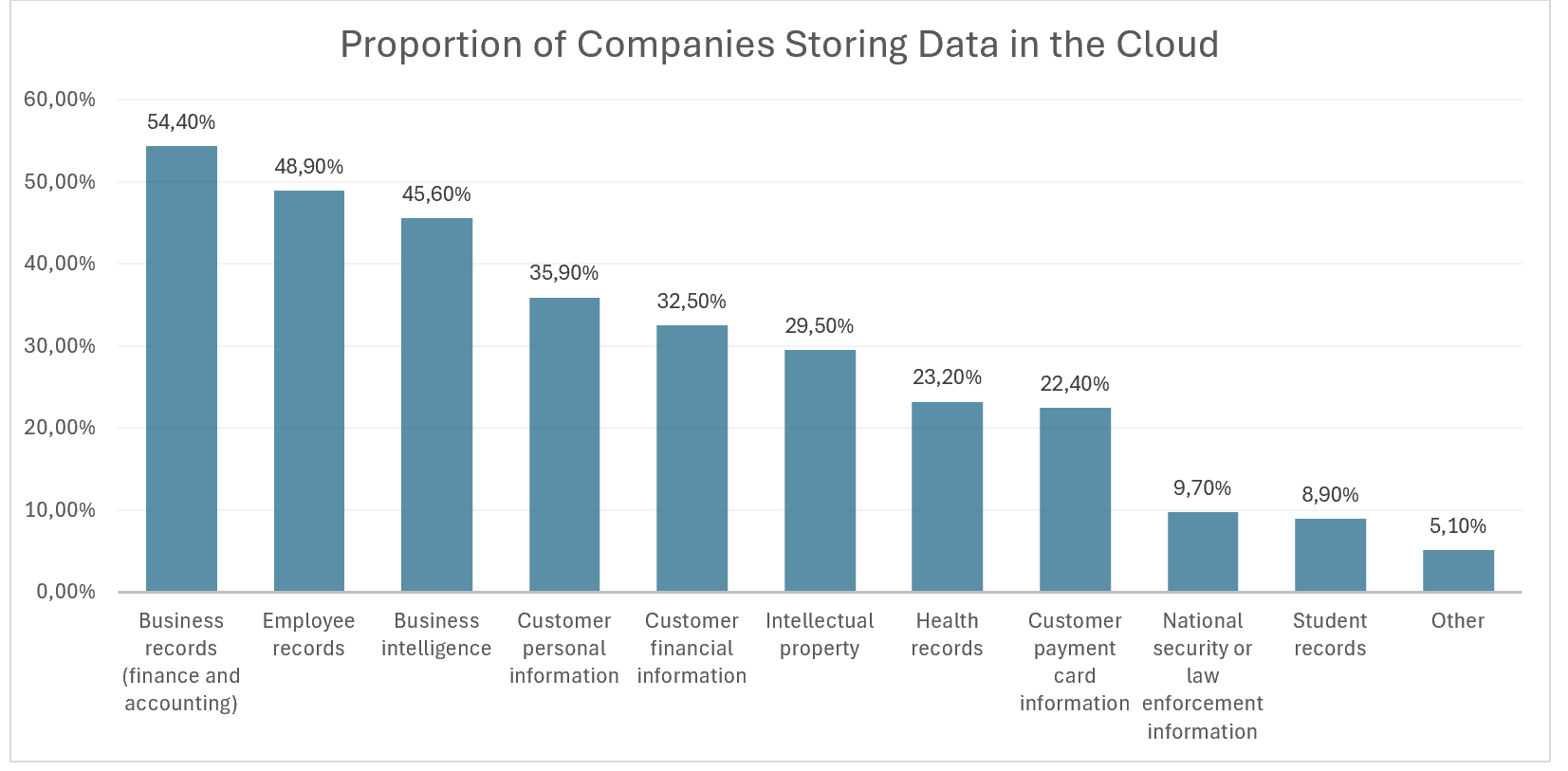
Understand Your Audience and Market
Before you can effectively transform your business, you need to have a deep understanding of your audience and the market in which you operate. This understanding goes beyond mere demographics and purchasing behavior; it encompasses knowing your audience's pain points, preferences, and the channels through which they prefer to engage.
Conducting market research, leveraging analytics, and fostering a culture of customer feedback are essential steps in this process. By aligning your business strategies with the needs and desires of your audience, you can create more targeted, effective solutions that not only meet but exceed their expectations. This alignment is key to sustaining growth and maintaining a strong competitive position in your industry.
Focus on Customer Experience
Providing an exceptional customer experience (CX) is paramount for business success. It's not just about delivering a product or service; it's about creating a memorable and positive experience that engages your customers and encourages loyalty. Investing in CX means understanding every touchpoint a customer has with your brand, from initial awareness through to post-purchase support, and optimizing these interactions to be as positive as possible.
Techniques such as personalization, quick and efficient customer service, and consistent customer engagement across all channels can significantly enhance the customer experience. Additionally, leveraging technology to gain insights into customer behavior and preferences can help tailor your offerings to meet their expectations, thereby increasing satisfaction and fostering long-term relationships.
Streamline Your Processes
Efficiency is the backbone of any successful business, and streamlining your processes is essential to achieving it. By identifying redundancies and implementing more efficient workflows, businesses can significantly reduce the time and resources spent on redundant or low-value tasks. This includes adopting project management tools to better organize tasks, automating repetitive tasks with software solutions, and continuously monitoring and optimizing operational procedures.
A streamlined process not only enhances productivity but also allows your teams to focus their efforts on innovation and strategic tasks that drive business growth. Recognizing the importance of agility, incorporating feedback loops for continuous process improvement is vital. This approach ensures your operations remain flexible and responsive to the changing needs of the market and your customers.

Embrace Technology and Automation
In an age where technology continually shapes the business landscape, harnessing its power through automation becomes a fundamental strategy for business transformation. The integration of technology and automation into your operations can dramatically increase efficiency, reduce human error, and free up valuable resources for more strategic endeavors. AI-powered tools and machine learning algorithms can analyze vast amounts of data quickly, providing insights and making recommendations that would be impossible for human teams to match at the same pace.
Automation of routine tasks not only streamlines operations but also enhances the employee experience by allowing team members to focus on more meaningful and creative aspects of their jobs. From customer service chatbots to automated marketing campaigns, technology can play a crucial role in various facets of your business, driving innovation and enabling a more proactive approach to meeting customer needs. To stay competitive and future-proof your business, incorporating automation and the latest technological advancements is not just advisable—it's essential.
Invest in Employee Training and Development
Employee training and development stands as a pillar of organizational growth, playing a critical role in fostering innovation and maintaining a competitive edge. An investment in your staff's growth is an investment in the future of your business. By providing continuous learning opportunities, you're not only updating their skillsets to align with the latest industry trends but also boosting their morale and loyalty towards the company.
Training programs tailored to your business needs can enhance efficiency, promote leadership skills, and encourage the adoption of new technologies and methodologies. Furthermore, a culture of ongoing development nurtures an environment of innovation, where employees feel valued and are motivated to contribute to the company's success actively. By prioritizing employee growth, you ensure that your team not only keeps pace with the evolving market demands but can also anticipate and drive change, propelling your business forward.
Foster a Culture of Innovation
At the heart of every forward-thinking business lies a culture of innovation. This means creating an environment where new ideas are not just welcomed, but actively encouraged and pursued. Fostering such a culture requires a shift from a fear of failure to a mindset where failure is seen as an integral part of the learning and development process. Encourage your team to experiment, take calculated risks, and think outside the box, providing them with the support and resources they need to bring their innovative ideas to life.
Here are 2 books I've read last year on this topic:
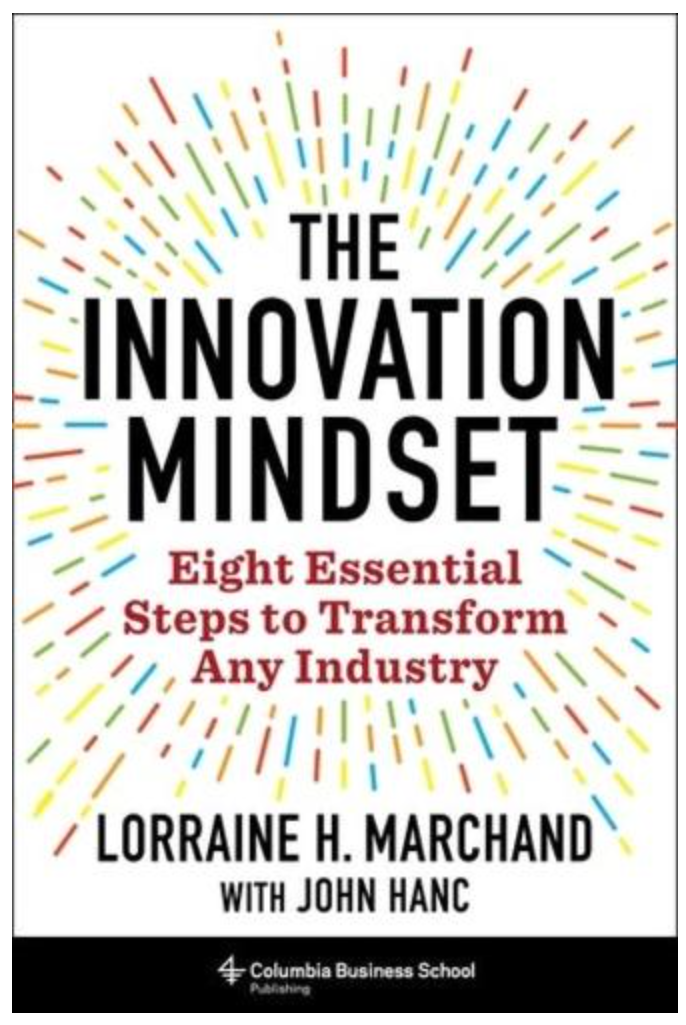
In "The Innovation Mindset," Lorraine Marchand presents a comprehensive guide to fostering innovation within organizations and individuals. Dispelling the myth that innovation is a rare, spontaneous spark, Marchand argues that it's a teachable skill, offering a detailed roadmap filled with anecdotes, practical processes, and case studies from varied industries. Highlighting the importance of culture, she provides step-by-step methods for idea implementation and product development. The book also addresses the underrepresentation of women in innovation, proposing actionable strategies for change. Through personal stories and expert commentary, Marchand makes the innovation process transparent and accessible, emphasizing its necessity for success in the modern business landscape. This work is celebrated as essential for aspiring innovators, corporate executives, and students alike, aiming to inspire a shift towards a more innovative mindset in professional and personal arenas.
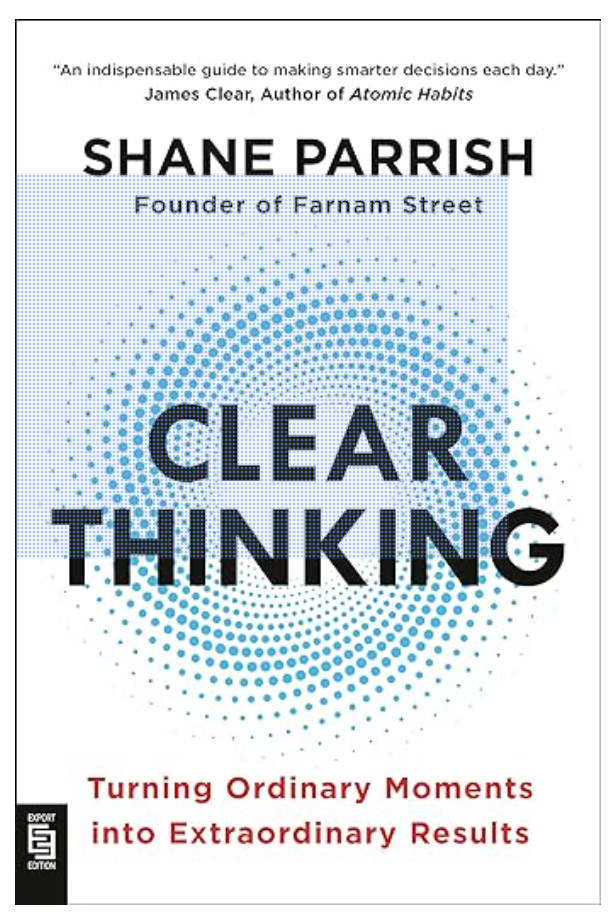
"Clear Thinking" by Shane Parrish advocates for the transformative power of honing one's cognitive skills to significantly alter life and business trajectories. Parrish, the mind behind Farnam Street, underscores the rarity with which individuals seize opportunities to genuinely engage in clear thought, particularly under pressure. This lapse, he suggests, often leads us away from our desired outcomes across various life domains, including personal relationships, professional success, and financial well-being. The book serves as a toolkit for identifying and leveraging moments capable of changing our path, encouraging a shift from reflexive responses to thoughtful actions.
Employing narratives, mental frameworks, and insights from behavioral science, Parrish bridges the gap between academic theory and practical application. This guide is positioned as an essential resource for anyone looking to refine their decision-making process, secure a competitive edge, or pursue a life marked by greater intentionality and purpose.
Leaders play a crucial role in shaping this culture by setting an example through their actions and decisions. Recognizing and rewarding creativity, providing platforms for idea sharing, and facilitating cross-departmental collaboration are key strategies to stimulate innovation. It's about creating an organizational ethos that views change as an opportunity rather than a threat and leverages collective creativity to overcome challenges and seize new opportunities. By embedding innovation into the core of your business strategy, you position your company to adapt and thrive in the constantly evolving business landscape.
Innovation within a digital agency like Codedesign manifests through the continuous evolution of strategies, technologies, and methodologies to stay ahead in the rapidly changing digital landscape. This dynamic environment requires the Codedesign team to constantly explore new frontiers in digital marketing, ensuring that our solutions meet and exceed our clients' expectations. Here's what innovation looks like in a digital agency like Codedesign.org:
-
Adopting Advanced Analytics and Data Insights: Leveraging cutting-edge analytics tools and data science techniques to gather, analyze, and act on data more effectively. This involves using predictive analytics to forecast trends, personalize marketing efforts, and enhance decision-making processes. By turning data into actionable insights, we can tailor strategies that precisely target the right audience at the right time, optimizing marketing spend and increasing ROI.
-
Integrating Artificial Intelligence and Machine Learning: AI and machine learning technologies are revolutionizing how digital agencies operate, from automating routine tasks to providing deeper insights into customer behavior. For instance, AI-driven chatbots can improve customer service. At the same time, machine learning algorithms can optimize ad spend across platforms like Google Ads and Meta Ads, ensuring higher efficiency and effectiveness of marketing campaigns.
-
Exploring New Channels and Platforms: Innovation involves constantly scouting and experimenting with emerging platforms and technologies. Whether it’s new social media networks, augmented reality (AR) experiences, or voice search optimization, staying ahead means being one of the first to harness these new avenues for brand exposure and engagement. This proactive approach helps brands stand out in a crowded marketplace.
-
Advancing SEO Strategies: SEO is an ever-evolving field, and staying innovative means keeping abreast of the latest algorithm updates and search trends. This includes optimizing for voice search, focusing on local SEO, and ensuring websites are mobile-first and user-friendly. Advanced techniques, such as semantic search optimization and structured data markup, are also critical for enhancing visibility and driving organic traffic.
-
Leveraging Programmatic Media Buying: Automating the buying of ad space using AI and real-time bidding (RTB) allows for more efficient ad placements and budget allocation. Innovation in this area includes using Demand-Side Platforms (DSPs) and Data Management Platforms (DMPs) to refine targeting strategies, making ads more relevant to the audience and increasing conversion rates.
-
Prioritizing Customer Experience (CX): Innovating in digital marketing also means focusing on the customer journey, ensuring a seamless, personalized experience across all touchpoints. This involves using data to understand customer needs and preferences, designing intuitive user interfaces, and creating engaging, valuable content that resonates with the target audience.
-
Embracing Agile Marketing: Adopting an agile approach to marketing allows for greater flexibility, rapid iteration, and the ability to adapt strategies quickly in response to market changes or campaign performance data. This iterative process encourages experimentation, with short sprints to test new ideas, measure results, and refine strategies in real-time.
Innovation in a digital agency is characterized by a forward-thinking mindset, a willingness to embrace new technologies, and a relentless pursuit of excellence in digital marketing strategies. At Codedesign, we embody this spirit of innovation, continuously exploring and implementing advanced solutions to drive success for our clients in the digital age.
Determining the exact percentage of a digital company's budget that should be allocated to innovation can be challenging, as it varies based on numerous factors, including the company's size, industry, growth stage, and strategic objectives. However, Codedesign team recommends for a balanced approach that prioritizes innovation while ensuring the core business remains robust and competitive. Here’s a framework to consider when allocating budget for innovation within a digital company:
-
Industry Benchmarking: Start by examining industry benchmarks. On average, companies allocate between 4% to 10% of their revenue to research and development (R&D), which is a good proxy for innovation spending. However, this can be significantly higher in rapidly evolving industries or for companies seeking to disrupt their markets.
-
Growth Stage and Strategic Goals: Early-stage companies or those in high-growth modes may invest a larger portion of their budget in innovation to capture market share and establish a competitive edge. Conversely, more established companies might allocate a smaller, but still significant, percentage of their budget to innovation to sustain growth and remain relevant.
-
Balancing Core and New Initiatives: Allocate funds to maintain and gradually improve the core business, ensuring stability and consistent revenue generation. The remaining portion can be directed towards more speculative, innovative projects. A common approach is the 70-20-10 rule, where 70% of the budget goes to core business activities, 20% to adjacent innovations, and 10% to transformative initiatives.
-
ROI Consideration: Innovation should not be pursued at the expense of return on investment (ROI). Allocate the innovation budget in areas with the potential for high ROI. This includes investing in advanced digital marketing solutions like analytics, artificial intelligence, and customer experience enhancements that can directly contribute to increased revenues and efficiencies.
-
Flexibility: The budget allocated to innovation should be flexible. Economic conditions, competitive pressures, and market opportunities can shift rapidly, necessitating adjustments in spending. Maintain a reserve that can be redirected towards innovation when a promising opportunity or a need to pivot arises.
-
Continuous Evaluation: Regularly assess the outcomes of your innovation investments. This evaluation should inform future budgeting decisions, allowing you to increase funding in areas that show promise and scale back in areas that do not meet expectations.
In practical terms, allocating between 10% to 15% of the total budget to innovation is a good starting point for a digital company, adjusting as necessary based on the specific circumstances and industry dynamics.

Best methods to innovation with your team
Navigating the vast array of innovation methodologies can be daunting. To streamline this process, it's beneficial to curate a personalized toolkit of methods, processes, and tools tailored to your specific needs and innovation phase. To assist in this endeavor, we've highlighted several widely embraced innovation methods applicable across diverse industries and companies.
First and foremost, establishing an innovation pipeline process from inception to deployment is crucial, regardless of the methodologies chosen. We'll delve into the foundational principles of each method and illustrate how they integrate into the various stages of the innovation process.
Innovation Mapping
Overview: Innovation mapping provides a comprehensive view of the innovation ecosystem by tracing the origins of past innovations, successful or otherwise.
Approach: This method involves a four-step pipeline: posing critical questions, sourcing data, analyzing methods, and evaluating outcomes. It begins with defining key inquiries about innovation within your ecosystem, followed by data collection from various sources. This data is then analyzed and shared with relevant stakeholders.
Benefits: Innovation mapping aids in strategic decision-making by offering insights into how innovations occur within your industry, analyzing the success or failure of past innovations, and identifying opportunities for new strategic initiatives.
Hackathons
Overview: Hackathons are time-limited events designed to solve specific challenges, with participants ranging from developers to designers and beyond. These events foster innovation and break conventional patterns within a company.
Approach: Ensuring participants can dedicate 2-3 days to the event is essential, with a focus on market validation and customer insights. Hackathons encourage cross-disciplinary collaboration, sparking fresh ideas and innovative solutions.
Benefits: Hackathons are a rapid means to generate new ideas and encourage risk-taking in a controlled environment. They promote cross-functional team collaboration, enhancing creative thinking and uncovering hidden project opportunities.
Design Thinking
Overview: Design thinking is a user-centered approach to solving complex problems, emphasizing understanding the user's needs.
Approach: The process begins with empathizing with users, followed by defining the problem, ideating solutions, and creating a minimum viable product (MVP) for testing and refinement.
Benefits: By focusing on the user, design thinking fosters innovative solutions that are both creative and market-valuable, offering a flexible framework that can be combined with other methods.
(Design) Sprint
Overview: Originating from Google, design sprints are a condensed problem-solving framework focusing on quickly developing and testing solutions.
Approach: Design sprints involve a structured five-day process that moves from defining the challenge to prototyping and testing solutions.
Benefits: They allow for rapid creativity and problem-solving, minimizing time spent in decision-making meetings and focusing on delivering testable products.
Agile Thinking
Overview: Agile thinking prioritizes project management and speed, initially devised for software development but now applicable across various industries.
Approach: Agile methodologies, such as Scrum, Kanban, and Lean, focus on optimizing workflow, reducing waste, and facilitating rapid response to change.
Benefits: Agile approaches maximize team contributions, improve customer engagement, and bring valuable products to market more quickly and predictably.
Blue Ocean Strategy
Overview: This strategy focuses on creating new market spaces ("blue oceans") and escaping the competition.
Approach: The strategy involves five steps, from team building and understanding your current position to systematically exploring and capturing new market opportunities.
Benefits: It shifts the focus from competing in crowded markets to exploring new spaces, fostering innovation through value creation and cost reduction.
Jobs to be Done
Overview: This framework identifies customer needs by understanding the "jobs" customers hire products or services to do.
Approach: Define your market by the jobs to be done, identify potential customers and unmet needs, and prioritize solutions that address these needs effectively.
Benefits: It broadens business perspectives, aligns teams around a common purpose, and optimizes resource allocation by focusing on the most critical customer jobs.
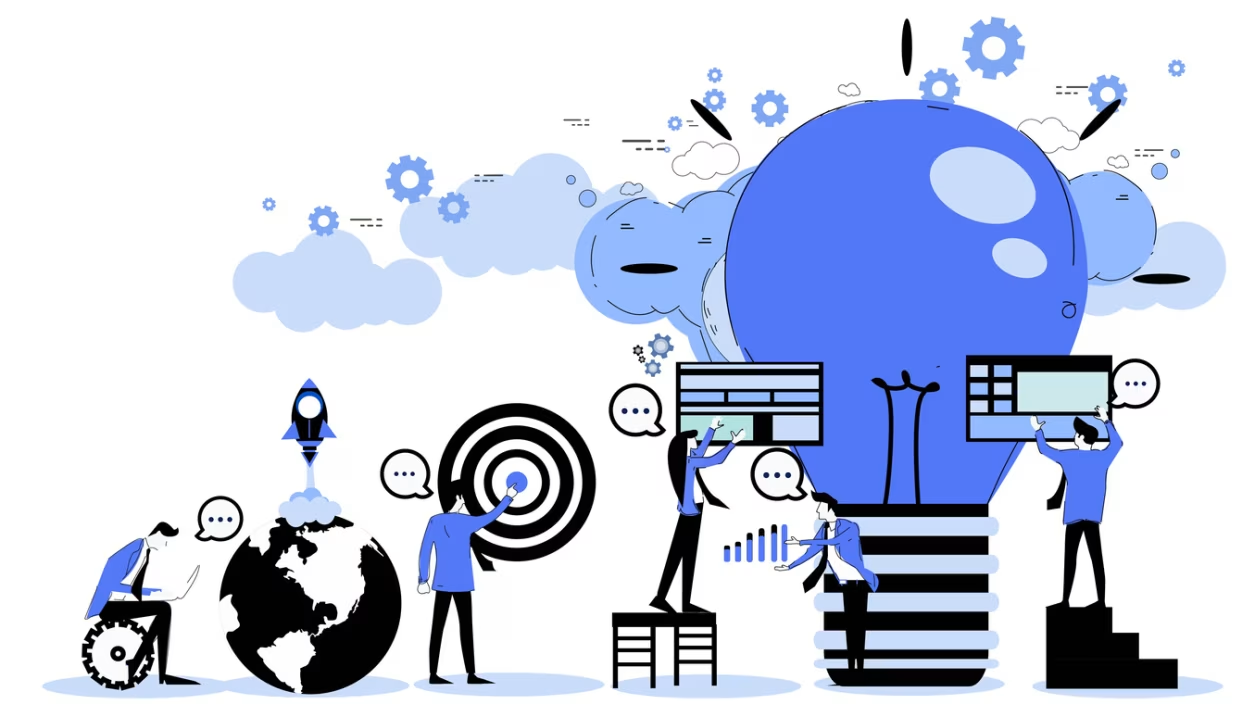
Choosing the Right Innovation Method
Selecting an innovation method depends on various factors, including the innovation process stage, the type of innovation pursued, and the industry context. There's no one-size-fits-all approach; thus, it's crucial to adapt methods to your specific situation. By understanding the standard steps of the innovation process and how these methods apply, organizations can navigate from idea generation to implementation more effectively, fostering a culture of continuous innovation.
As you navigate through the innovation process, the application of the right methods at the right time can significantly enhance your chances of success. Here's a deeper look into the innovation process steps and how the previously mentioned methods can be effectively integrated:
Idea Generation and Mobilization
The genesis of innovation is idea generation, sparked by a comprehensive understanding of the market ecosystem. Innovation mapping is particularly useful at this stage, providing insights into where and how successful innovations have originated within your industry. Tools like Viima can facilitate ideation, while organizing a hackathon can rapidly mobilize a breadth of ideas by bringing together diverse perspectives and skill sets.
Advocacy and Screening
Once ideas are generated, the next crucial step is to evaluate their viability. This involves a transparent and objective process of weighing the pros and cons of each idea. While the Jobs to be Done framework isn't explicitly a screening tool, it aids in aligning ideas with customer needs, ensuring that the ideas with the most potential to meet real market demands are advanced. A structured approach to screening helps mitigate biases and ensures that innovation efforts are aligned with strategic business goals.
Experimentation
At this stage, ideas are prototyped and tested within target environments. Design thinking and design sprints are invaluable methodologies here, focusing on rapid prototyping and user feedback. This phase is about validating the assumptions behind each idea, with the goal of refining or pivoting the approach based on real-world feedback. It's a critical step in reducing the risk associated with new innovations by ensuring that they resonate with the intended audience before significant resources are committed.
Commercialization
Transitioning from prototype to market entails defining the value proposition and determining the most effective go-to-market strategy. Agile methodologies, particularly the Lean approach, are instrumental in navigating this phase. They emphasize rapid experimentation and the use of data to make informed decisions about market fit, pricing, distribution channels, and marketing strategies. The agility to adapt based on feedback and market evidence is crucial for successfully introducing new innovations to the market.
Diffusion and Implementation
The final stage is about scaling the innovation across the organization and its target markets, ensuring widespread adoption and integration into the business's core offerings. This requires clear communication, effective resource allocation, and ongoing support to ensure that the innovation is not only adopted internally but also embraced by customers. Monitoring performance against predefined metrics allows for continuous improvement and sets the stage for the next cycle of innovation.
The selection and application of innovation methods are as dynamic as the innovation process itself. It requires a strategic mindset, a willingness to experiment, and an organizational culture that supports creativity and risk-taking.
FAQS Frequently Asked Questions
What are the key strategies for transforming a business according to Codedesign?
Codedesign, a leading digital marketing agency, emphasizes the integration of digital technologies into all areas of a business, fundamentally changing how you operate and deliver value to customers. A pivotal strategy is the digital-first approach, which encompasses the adoption of advanced analytics, programmatic media buying through DSPs (Demand Side Platforms), and leveraging DMPs (Data Management Platforms) for deeper audience insights. Codedesign suggests personalizing customer experiences through data-driven insights and automating marketing processes for efficiency. The agency has successfully implemented these strategies for clients like Minor Hotels, increasing their digital presence and revenue.
How does cloud technology contribute to business competitiveness?
Cloud technology significantly enhances business competitiveness by offering scalable resources, which ensure flexibility and agility in operations. This technology enables companies to deploy and manage applications and services rapidly, allowing them to react quickly to market changes. Additionally, cloud platforms provide advanced data analytics tools, facilitating insights into customer behavior and operational efficiency. By leveraging cloud services, businesses can reduce IT costs, improve collaboration among teams, and innovate faster. This agility and efficiency have been crucial for Codedesign's clients, enabling them to stay ahead in highly competitive markets.
Why is understanding the audience and market essential for business transformation?
Understanding the audience and market is pivotal for business transformation because it informs strategic decisions, ensuring they are aligned with customer needs and market trends. This knowledge enables businesses to tailor their products, services, and marketing messages to meet the specific demands of their target market, resulting in increased engagement and loyalty. For instance, Codedesign leverages advanced data analytics and market research to develop highly targeted digital marketing campaigns for its clients, leading to improved ROI and customer satisfaction. This deep understanding of the audience and market is essential for staying relevant and competitive in a constantly evolving business landscape.
What role does customer experience play in achieving business success?
Customer experience is paramount in achieving business success, acting as a key differentiator in today's competitive landscape. It influences customer loyalty, retention, and advocacy, directly impacting revenue and growth. A positive customer experience is achieved through seamless interactions across all touchpoints, personalized engagement, and prompt customer service. Codedesign highlights the importance of using data analytics and customer feedback to continuously improve the customer journey. For example, by optimizing website interfaces and personalizing communication, Codedesign has helped clients like Bairrada significantly improve customer satisfaction and conversion rates.
How can streamlining processes enhance a business's efficiency?
Streamlining processes enhances a business's efficiency by eliminating redundancies, automating repetitive tasks, and optimizing workflows. This results in faster turnaround times, reduced costs, and improved productivity. For example, implementing programmatic advertising automates the buying and placement of ads, enabling marketers to focus on strategy and creative development. Codedesign advocates for the use of technology to streamline marketing efforts, as seen in its approach to digital campaigns, where efficiency gains contribute to better performance and scalability for clients.
Why is investing in employee training and development crucial for a business?
Investing in employee training and development is crucial for a business because it equips the workforce with the necessary skills and knowledge to adapt to rapidly changing market demands and technological advancements. This investment not only improves productivity and innovation but also boosts employee morale and retention, creating a more engaged and committed workforce. Codedesign understands the importance of continuous learning, especially in the dynamic field of digital marketing, and invests in training programs for its team. This ensures that the agency remains at the forefront of digital trends, enabling it to deliver cutting-edge solutions for its clients.
How can a culture of innovation be fostered within a company?
Fostering a culture of innovation within a company involves creating an environment that encourages creativity, experimentation, and the free exchange of ideas. This can be achieved by promoting a fail-fast mentality, where failures are seen as learning opportunities rather than setbacks, and by providing employees with the resources and autonomy to explore new ideas. Additionally, recognizing and rewarding innovative efforts is essential to motivate continuous innovation. Codedesign exemplifies this approach by encouraging team collaboration on projects and staying open to adopting new technologies and methodologies, thereby maintaining its competitive edge and delivering exceptional value to clients.
How does programmatic advertising enhance digital marketing campaigns?
Programmatic advertising significantly enhances digital marketing campaigns by utilizing algorithms and data to automate the buying, placement, and optimization of media inventory in real-time. This approach allows for more precise targeting, based on demographics, interests, behavior, and more, ensuring that ads are shown to the most relevant audience segments. It increases efficiency and effectiveness by reducing manual processes and enabling marketers to focus on strategy and creative development. For instance, Codedesign leverages programmatic advertising to achieve higher engagement and conversion rates for clients, showcasing its ability to deliver tailored messages across the most impactful channels at the optimal times.
What is the importance of data analytics in understanding consumer behavior?
Data analytics plays a crucial role in understanding consumer behavior by providing insights into how consumers interact with brands across various touchpoints. It helps in identifying patterns, preferences, and trends, enabling businesses to make informed decisions about product development, marketing strategies, and customer experience improvements. By analyzing data from different sources, companies can personalize their offerings and communications, enhancing customer satisfaction and loyalty. Codedesign, for instance, uses advanced data analytics to drive its decision-making process, ensuring that marketing campaigns are data-driven and closely aligned with consumer needs and behaviors.
Why is mobile optimization critical for digital marketing success?
Mobile optimization is critical for digital marketing success because of the increasing prevalence of smartphones and tablets as the primary means of internet access for consumers. A mobile-optimized experience ensures that websites and advertisements are easily accessible and navigable on smaller screens, providing a seamless user experience. This not only improves engagement rates but also boosts conversion rates, as consumers are more likely to interact with content that is optimized for their device. Codedesign emphasizes mobile optimization in its digital strategies, understanding its importance in reaching and engaging today’s mobile-centric consumers effectively.
How can social media platforms be leveraged for brand growth?
Social media platforms can be leveraged for brand growth by enabling businesses to connect with their audience in a direct and engaging manner. These platforms offer opportunities for content distribution, customer service, and community building, allowing brands to enhance their visibility, foster loyalty, and drive sales. By utilizing targeted advertising, influencer partnerships, and interactive content, companies can expand their reach and resonate with their target audience. Codedesign excels in crafting social media strategies that amplify brand presence and engagement, demonstrating how effectively leveraging these platforms can contribute to overall business growth.
What role does content marketing play in attracting and retaining customers?
Content marketing plays a pivotal role in attracting and retaining customers by providing valuable, relevant, and consistent content that addresses the interests and needs of the target audience. It helps in building trust and establishing a brand as a thought leader in its industry. Effective content marketing strategies drive inbound traffic, improve search engine rankings, and increase conversion rates by educating and engaging potential customers. Codedesign utilizes content marketing to enhance brand awareness and loyalty for its clients, creating compelling content that resonates with their audiences and encourages long-term relationships.
 |
Thoughts by Bruno GavinoBruno Gavino is the CEO of Codedesign, a Lisbon-based digital marketing agency, with offices in Boston, Singapore, and Manchester (UK). He plays a pivotal role in shaping the agency's growth and direction, particularly in the realm of digital marketing. Codedesign has built a strong team of dedicated professionals, including marketers, developers, and creative thinkers, with a mission to help businesses grow online. Bruno's expertise extends to various aspects of digital marketing, and he has been active in sharing his insights on the impact of significant global events on the digital marketing landscape. His contributions to the field extend beyond his role at Codedesign. Bruno Gavino is known for his broad perspective on digital strategies and innovative solutions that drive the company's vision. |
 |
CodedesignCodedesign is a digital marketing agency with a strong multicultural and international presence, offering expert services in digital marketing. Our digital agency in Lisbon, Boston, and Manchester enables us to provide market-ready strategies that suit a wide range of clients across the globe (both B2B and B2C). We specialize in creating impactful online experiences, focusing on making your digital presence strong and efficient. Our approach is straightforward and effective, ensuring that every client receives a personalized service that truly meets their needs. Our digital agency is committed to using the latest data and technology to help your business stand out. Whether you're looking to increase your online visibility, connect better with your audience, get more leads, or grow your online sales. For more information, read our Digital Strategy Blog or to start your journey with us, please feel free to contact us. |
CodeDesign is leading:
- Digital Agency
- Digital Marketing Agency
- Amazon Marketing Agency




Add comment ×